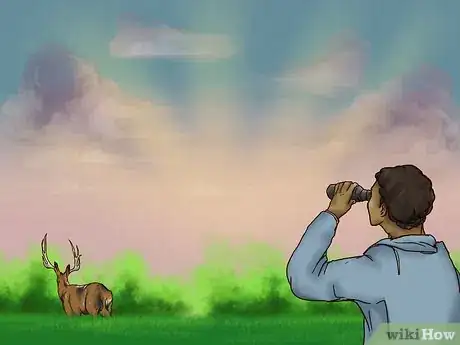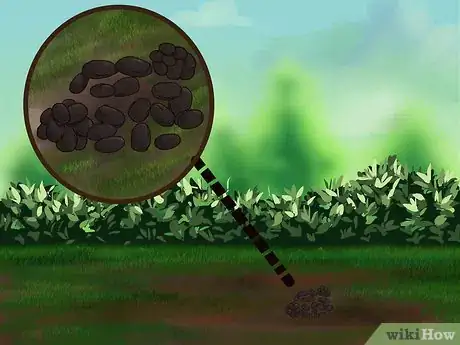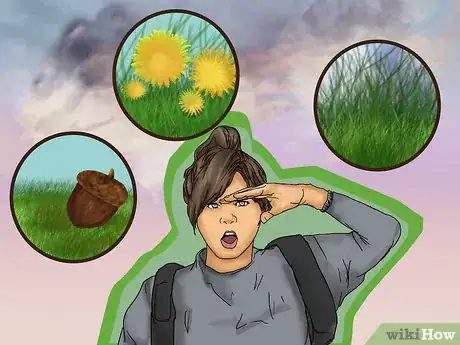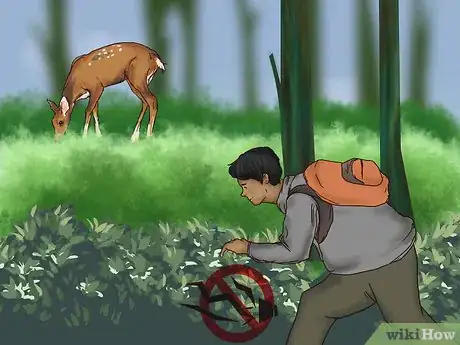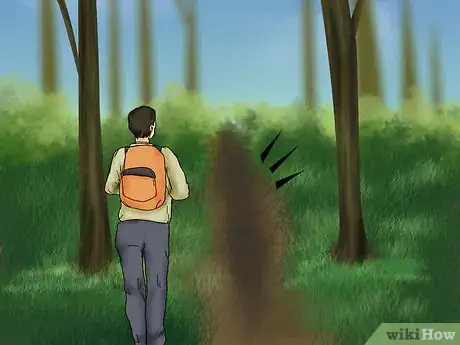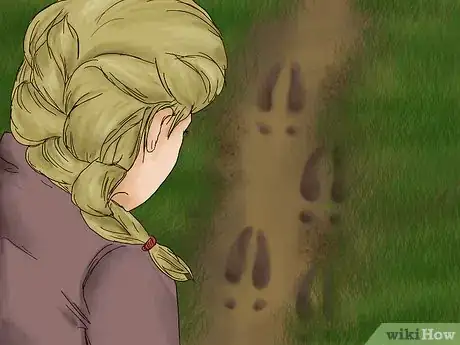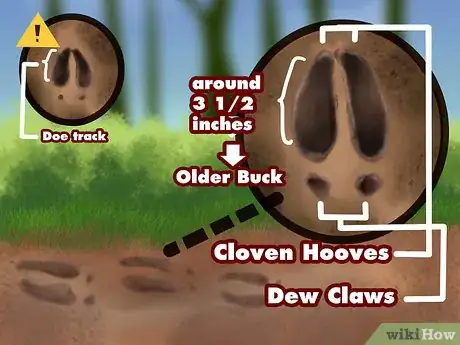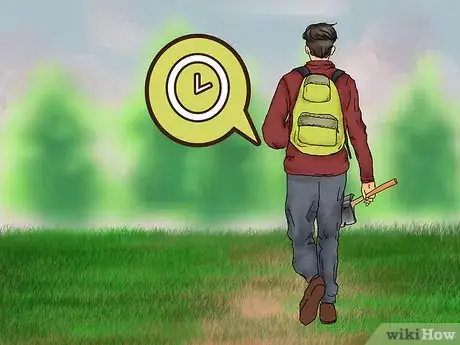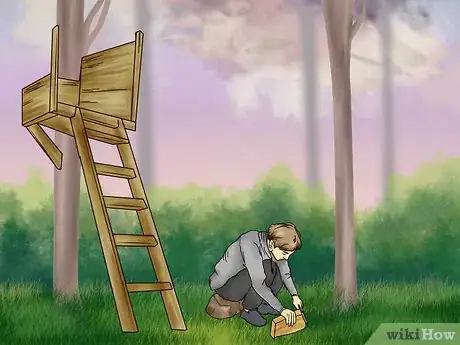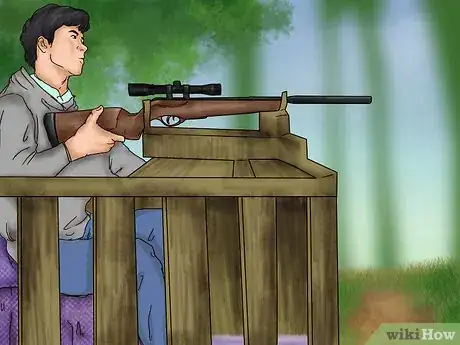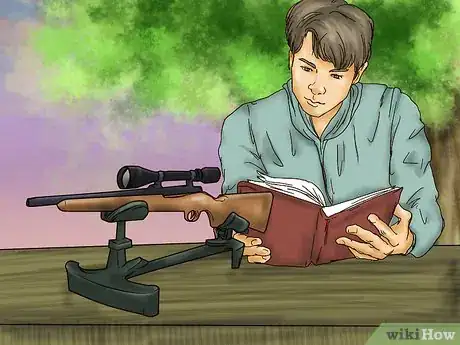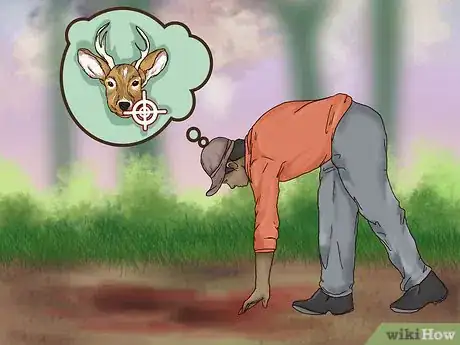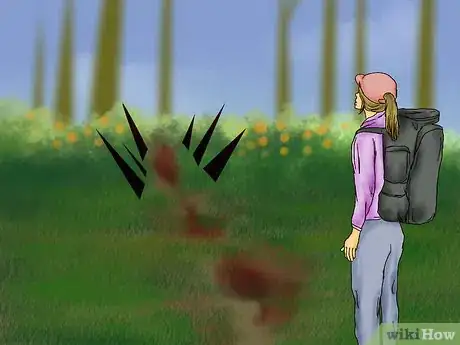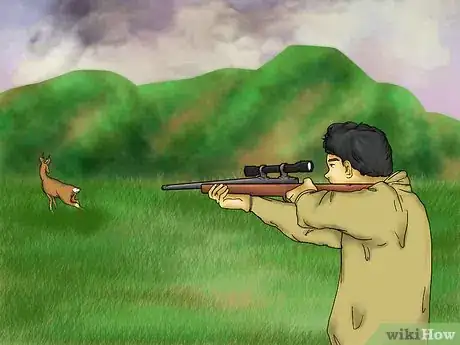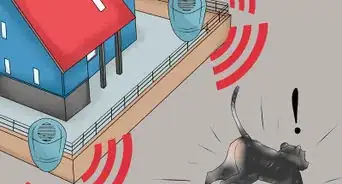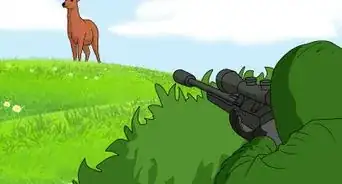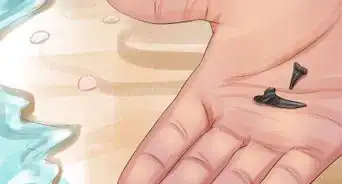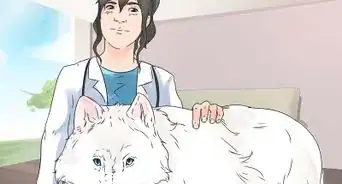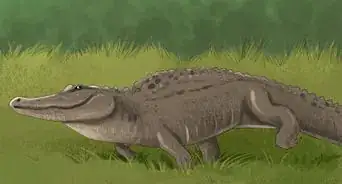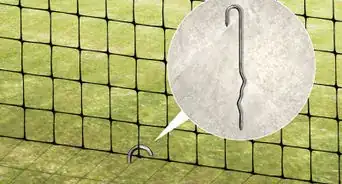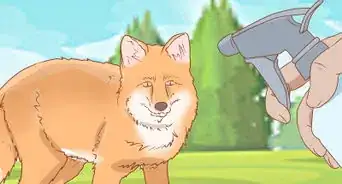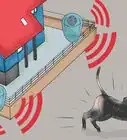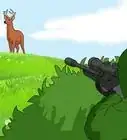This article was co-authored by wikiHow Staff. Our trained team of editors and researchers validate articles for accuracy and comprehensiveness. wikiHow's Content Management Team carefully monitors the work from our editorial staff to ensure that each article is backed by trusted research and meets our high quality standards.
There are 7 references cited in this article, which can be found at the bottom of the page.
This article has been viewed 47,237 times.
Learn more...
Locating and tracking deer can be a difficult task. Whether you're hunting deer for their meat or simply watching them in their natural habitat, doing a little bit of research ahead of time can go a long way. As long as you use caution and are mindful of the potential safety dangers, hunting and tracking deer can be enjoyable pastimes. There are many ways to hunt and track deer; it is important to choose the method that will be the most fun and that will work the best for your equipment and surroundings.
Steps
Tracking a Deer
-
1Choose your area. Walk into legal hunting grounds where there are woods. If you're hunting or tracking deer on someone else's property, ask where deer tend to bed and where the most common place to see deer is. This will help you decide where to start.
- Typically, deer prefer covered areas to make their beds in. Look for ditches and hollows with dense cover or thickets crowded with brush. They often bed along stream bottoms or on southward-facing slopes to keep warm in the sunlight.[1]
-
2Choose your time. Deer are mostly nocturnal, but they can also be seen out in the daytime. However, since they usually sleep during the day (and it is hard to see them at night), the best times to search for deer are early in the morning or at dusk when the sun is going down. These are their normal feeding times and the time you will be most likely to catch a glimpse of them.Advertisement
-
3Search for visible signs of deer. There is often evidence of deer all around you if you know where to look for it. Keep an eye out for indicators that deer have been in the area like tracks or droppings.
- Deer droppings are usually small, jellybean shaped pellets that are dark brown in color.[2] Sometimes the droppings appear as a bunch of separate pellets, sometimes as a bunch of pellets clumped together.
- You can also try staying stationary in an area that is known to often be frequented by deer so that you can simply wait and watch/listen for the deer.
- Make sure you are moving through the woods as quietly as possible to avoid spooking any deer that might be nearby.
-
4Look for places deer would be attracted to. Deer usually bed in areas of thick brush; these are good places to begin your search. You can also search for edible vegetation that deer feed on like wild grasses, greenbriar, dandelions, or acorns.
-
5Be as quiet as possible. Deer have very keen senses of sight and sound. Try to be as silent as you can while you are tracking through the woods. If you are too noisy, they will hear you long before you notice them and you will miss your chance.[3]
-
6Continue searching. Follow the tracks and keep searching for signs of deer until you encounter the animals. This takes patience, but is worth it in the end.
Interpreting Deer Tracks
-
1Find deer tracks. If there is moisture or snow on the ground, this will make it easier to locate tracks. Deer tracks are easiest to spot in snow or soft dirt/mud that is malleable to the touch and will reposition into a track when an animal steps on it.
-
2Look at the features of the tracks. When you find deer tracks, you can use them as evidence to help you determine how many deer were present and how big they were. Deer tracks have two “toes” and a marking at the base of the track. Deer have cloven hooves which means they're split down the middle. Deer tracks normally look like the image below. Generally, the bigger the track, the bigger the deer.
- Remember, if you see larger tracks accompanied by small tracks, you may be following a doe with a fawn. You do not want to kill a mother deer as this will orphan the fawn.
-
3Determine if tracks are fresh or old. If the tracks seem frozen over or are messed up by other tracks, they are most likely old. If there has been a recent snow and there are uncovered tracks in it, they are probably new.
Using a Stand to Find Deer
-
1Clear the area ahead of time. If you're looking to kill a deer for venison, it is important to prepare the area where you will build the stand well ahead of the time you plan to begin hunting. This will ensure that your scent is clear of the path by the time you want to hunt. You should clear away some of the noisy ground brush so that you will be able to access your stand without making too much noise.[4]
-
2Build the stand. There are several different kinds of hunting stands to choose from. Decide which one works best for you and the area in which you want to hunt. Both types of blinds should be built in areas of heavy deer traffic to increase your chance of encountering a deer while you wait. Be sure to do plenty of scouting around the area before you choose the location to build your stand. Look for deer beds and signs of grazing.
- Ground blind/stand. A ground stand requires less work to construct than a tree stand. You can actually build it out of natural materials. Try to find a tree to rest against and then use sticks, leaves, and brush to build up a natural cover that blocks your lower body. Make sure you pick a slightly elevated spot so that you can see animals that approach.[5]
- Tree stand. A tree stand is a good idea if you are in a heavily wooded area. But make sure there is plenty of leaf cover or branches surrounding your stand, otherwise your silhouette will be noticeable. Use all safety features for the stand (like a climbing harness during construction) to make it completely secure and be cautious when entering and exiting the tree stand. One misstep could mean disaster if you fall.
- Make sure you follow all of the manufacturer's directions when constructing the tree stand. If you skip a step in the building process, it could easily make your tree stand unsafe and dangerous for you to use.[6]
-
3Prepare your area. Install a rest for your rifle. Some models are designed to wrap around the hunter while they are seated; these are ideal for use in tree stands. Make sure all pieces of your blind/stand are silenced in whatever way possible. Cover your seat with fleece, lubricate any moving parts, encase chains in tubing, and bring a piece of old carpet for the floor of your stand. All of these things will help reduce the noise while you wait.
-
4Wait for the deer to come to you. Deer travel all day, so you may be waiting for a long time.[7] Bring a book or something to keep yourself occupied. Bring plenty of food and water to last the duration of your hunting excursion. Be prepared to exit your stand when necessary to stretch, or take care of other personal needs. Occasionally moving around will make the waiting more tolerable.
Tracking a Deer That Has Been Shot
-
1Find the location of the deer when it was shot. When you initially shoot the deer, try to watch closely for the path it takes when it runs after being shot. Once it runs away, go toward the place you last saw it, probably the spot where it was shot, and look for signs of the deer. There should be at least some blood here, so it should be fairly simple to locate. .
-
2Search for directional signs. Try to figure out which way the deer when by looking for visible signs. Try to find evidence of blood on the ground or on nearby brush. There may also be broken branches and other disrupted vegetation as a result of the deer's hurried exit. If there are tracks and blood, follow them. Keep looking for the next sign of blood or the next set of tracks as you make your way toward the injured deer.
- It is easier to track deer in the snow but it is still possible to track them out of it. You just need to look for signs of blood and disrupted/broken brush or vegetation.
-
3Kill the deer when you find it. If you hit the deer in the gut, it is likely the deer will not die for a while as it will bleed to death. Be cautious when pursing a wounded animal; they are more unpredictable and can be dangerous. If you can, stay back and shoot it again in a fatal place when it has stopped to rest. You are aiming for a quick, humane kill on the animal whose meat will help sustain you.
Community Q&A
-
QuestionHow fast do deer go?
 Lily IrelandCommunity AnswerThe fastest a running whitetail deer can go is thirty miles per hour. This applies to any adult whitetail deer.
Lily IrelandCommunity AnswerThe fastest a running whitetail deer can go is thirty miles per hour. This applies to any adult whitetail deer.
Warnings
- Never fire a firearm without using the proper ammunition and the right size charge in the ammo or shell.⧼thumbs_response⧽
- Check your firearm for a blockage in the barrel before firing any weapon.⧼thumbs_response⧽
- Never shoot a deer without a proper backstop.⧼thumbs_response⧽
- Never hunt out of season for the animal you are hunting, even for small animals such as rabbits and squirrels.⧼thumbs_response⧽
- Never use illegal hunting methods such as spot lighting or baiting.⧼thumbs_response⧽
- Never shoot an animal until properly identified.[8]⧼thumbs_response⧽
References
- ↑ http://www.fieldandstream.com/articles/hunting/2012/10/important-deer-sign-find-these-6-types-bedding-near-you
- ↑ https://www.biggamelogic.com/ArticlesNews/tabid/136/articleType/ArticleView/articleId/132/Understanding-Deer-Deer-Droppings--Scouting-Deer-Part-3.aspx
- ↑ https://www.biggamelogic.com/ArticlesNews/tabid/136/articleType/ArticleView/articleId/192/DEER-HUNTING-101-Why-Some-Hunters-Succeed-Others-Dont.aspx
- ↑ http://www.fieldandstream.com/node/1005010711
- ↑ http://www.fieldandstream.com/node/1005010711
- ↑ https://www.youtube.com/watch?v=XaaVESJWDyA
- ↑ http://www.fieldandstream.com/articles/hunting/2013/09/ten-deer-donts
- ↑ http://www.fieldandstream.com/blogs/rut-report/2012/08/how-hunt-deer-10-most-important-deer-scouting-skills
About This Article
To find deer, search early in the morning or at dusk since that's when deer are usually most active. Also, look in dense, covered areas like covered hollows or crowded thickets, which is where deer like to stop and rest. As you're searching, keep an eye out for common signs of deer, like deer droppings and tracks. Keep in mind that deer have very sensitive ears, so you should try to be as quiet as possible when you're looking for them. To learn how to interpret deer tracks, scroll down!

